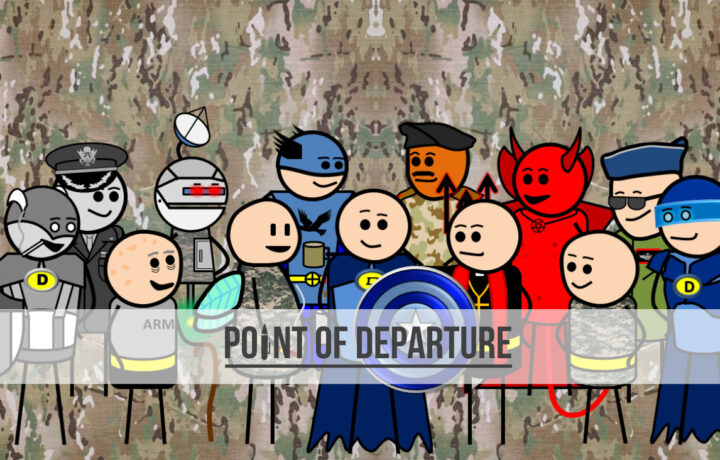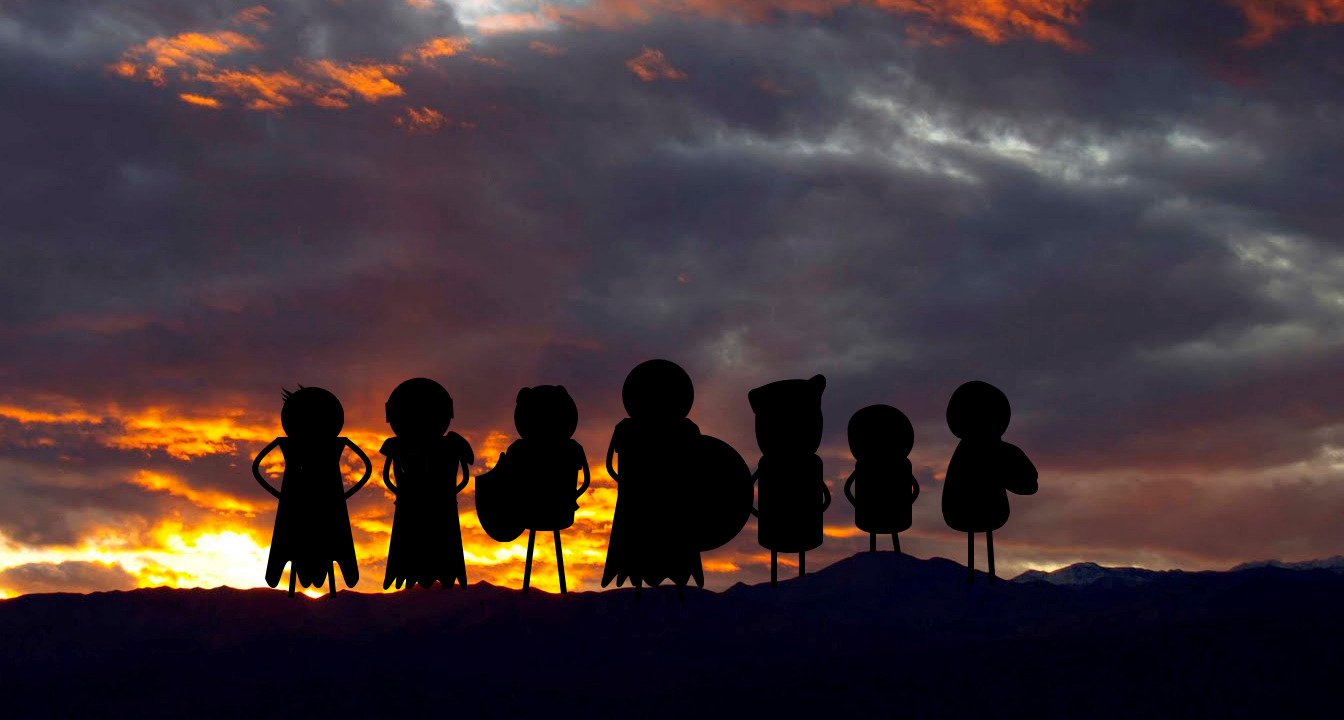“Start drinkin’ now, kid, and you can be just like me in 40 years.” – The Bright Idea Fairy
In 2011, I was sitting along the wall of the conference room, scribbling in my ubiquitous green notebook as the person at the head of the conference room table, Army Chief of Staff General Ray Odierno, was chatting with the other senior leaders seated near him. I was only half-listening to their conversation, enough to know when to start taking notes but not enough to give anyone the impression that I was eavesdropping. The conversation suddenly changed tone, and the Chief’s voice rose above the din.
“And this better not end up in a cartoon!”
I looked up from my notebook to find the Chief smiling and looking directly at me, as were the other faces at the conference room table. Then the Chief let out a laugh, the moment of tension passed, and the official part of the meeting began.
There Was an Idea
Doctrine Man’s origins are about as modest as they come. I’d always enjoyed using comic strips as a medium for telling a story or conveying a lesson, but a distinct lack of artistic talent stood between a vision and a corresponding reality. I satisfied myself rewriting the text in other comics, which really wasn’t all that satisfying. It had a Milli Vanilli feel to it. I wasn’t creating anything, just mouthing the words.
Then one day, I had an epiphany. While lamenting over my own inability to create comic art, someone said, “You should draw them in PowerPoint. Now that would be really funny.” I immediately went to work building the comic templates, designing a logo, and creating the characters themselves. Two weeks later, with an audience of tens waiting in anticipation, I emailed out the first official Doctrine Man cartoon.
From the outset, the comic was meant to tell a story, our story. It captured the inane and often mundane moments of military life that typify our service; moments we all recognize, told through the exploits, gestures, and attitudes of characters to whom we can all relate. Filled with random pop culture references, the comic was both a reflection of day-to-day life and a treasure trove of trivia. From the ubiquitous reflective belt to the KBR Soup Nazi, from Clausewitz Brothers Coffee to pilots’ big watches, every comic was a little more than meets the eye.
Over time, that audience grew from an Outlook mailing list to a social media presence with more than a quarter-million followers (and who knows how many “lurkers”). It was featured in the New York Times and Foreign Policy, and discussed on countless podcasts over the years. It included five comic compendiums, a wide selection of themed poker chips and challenge coins, and an entire line of merchandise. It was more than a comic: it was a statement about who we are. It was a brand.
Several years ago, my three-star boss returned from a Pentagon brief and called me to his office. When I arrived in his office, he commented that while he knew the comic existed, he was surprised to see its spread. “Those cartoons are hanging in every office in the building. You can’t walk into an office without seeing one hanging up.” From its humble beginnings in a non-descript cubicle farm in Fort Leavenworth, it spread across multiple continents and became a staple in military headquarters around the world.
Not bad for a smartass group of stick figures.
All Good Things
Yet, after 16 years and thousands of comics, the time had come to make a Gary Larson exit. Like the Far Side creator, I was never quite comfortable with the attention the comic brought and generally preferred anonymity when I could manage it. For years, that meant maintaining a Clark Kent-like persona; I didn’t advertise myself as the face behind the comic, but anyone who looked hard enough could figure it out.
A “coming out” followed my retirement from the Army in 2015, creating opportunities to engage on a much wider and more public fashion. The message was the same – a focus on leading through humor and storytelling – but it provided audiences – and followers – with a chance to express how the comic had affected them on a personal level. Those engagements kept Doctrine Man alive longer than I had ever expected; it’s difficult to sunset something that continues to make a positive difference in people’s lives.
But all good things must come to an end. Task & Purpose’s Jeff Schogol – the one member of the media who can bring a Pentagon briefing to its knees in laughter – was kind enough to offer a venue for an announcement, and on June 6 (D-Day, do you get it?), Doctrine Man will officially sign off the net. With a couple of exceptions…
While I will refocus the 2-3 hours per day spent on the social media side of Doctrine Man, I have adopted a weekly LinkedIn feature called “Every Cartoon Tells a Story,” where I share the background behind everyone’s favorite comic. I will also continue to engage through my weekly column at ClearanceJobs, where I’ve been sharing my particular brand of storytelling for the past several years. So, while the public face of Doctrine Man might exit stage left, the remnants will remain in place.
Old cartoon characters never die. They just fade away.





